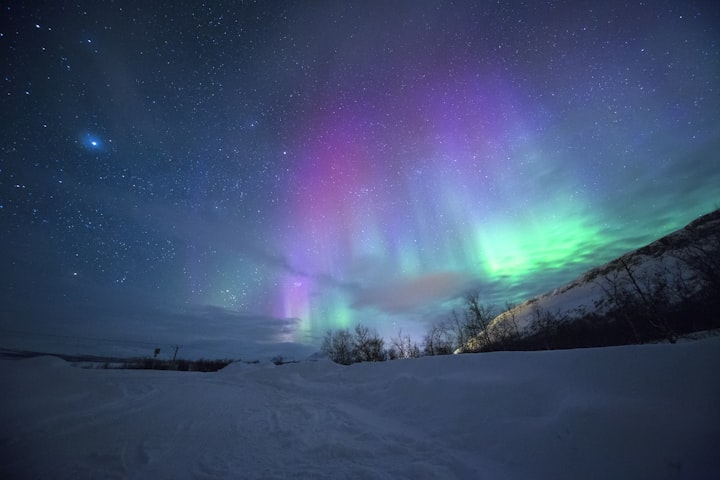The Majestic Aurora
The Magic of The Sun's Rays - With The Sky As A Grand Canvas

Imagine there's an invisible force field around our planet. Now imagine that for billions of years, that force field has been protecting us from a beam of supercharged plasma that would otherwise wipe out life on Earth as we know it. You might think this is some kind of science fiction story, but it's all true. And it's what gives us this: The aurora! The auroras are one of humankind's oldest mysteries.
The auroras have captivated humankind for eons, prompting us to craft wild theories to explain their mesmerizing dance across the night sky. From Aristotle's belief that they were celestial flames to modern revelations about the interplay between the Earth's magnetic field and the solar wind, our understanding has evolved dramatically over time.
At the heart of this celestial spectacle lies the sun, a colossal furnace emitting not just light but also a torrent of energized particles known as the solar wind. As these particles hurtle towards Earth at staggering speeds, our planet's magnetic field acts as a guardian, deflecting the majority of them away from harm's reach.
However, a small fraction of the solar wind manages to hitch a ride on Earth's magnetic field lines, converging at the poles to create the awe-inspiring auroras. When these charged particles collide with gases in the upper atmosphere, they ignite a luminous symphony of colors, painting the night sky with hues of green, red, and purple-pink.
But the auroras aren't just a dazzling light show; they serve as a window into the intricate dance between the sun and Earth. Solar storms, such as coronal mass ejections, can unleash torrents of charged particles that, when directed towards Earth, intensify the auroral displays and pose risks to our technology and communications.
From the vantage point of the International Space Station, astronauts witness these cosmic wonders firsthand, providing invaluable insights into the effects of solar activity on our planet. Meanwhile, artists on Earth transform these celestial snapshots into breathtaking works of art, amplifying the beauty and wonder of the auroras for audiences worldwide.
As we marvel at the celestial ballet unfolding above us, let us not forget the underlying force that makes it all possible: Earth's magnetic field, a silent sentinel protecting life on our planet. The auroras serve as a reminder of the delicate balance between Earth and the cosmos, a testament to the interconnectedness of our universe.
But beyond their aesthetic allure, auroras also play a crucial role in scientific inquiry. By studying these shimmering curtains of light, researchers can unlock valuable insights into the dynamics of our planet's magnetosphere and its interactions with the solar wind. This knowledge not only deepens our understanding of Earth's natural processes but also helps us mitigate the potential impacts of solar activity on our technological infrastructure.
Indeed, the study of auroras extends far beyond Earth's atmosphere. Similar phenomena have been observed on other planets in our solar system, such as Jupiter and Saturn, offering tantalizing glimpses into the workings of distant worlds. These extraterrestrial auroras serve as cosmic laboratories, allowing scientists to probe the magnetic environments of other celestial bodies and expand our understanding of the universe.
However, amidst the wonder and scientific inquiry, it's important to recognize the potential dangers posed by extreme solar events. Coronal mass ejections, in particular, can wreak havoc on Earth's technological infrastructure, disrupting satellite communications, GPS systems, and power grids. As our reliance on technology continues to grow, so too does the need for vigilance in monitoring solar activity and developing strategies to mitigate its impact.
In the grand tapestry of the cosmos, auroras stand as a testament to the beauty and complexity of our universe. They remind us of the profound interconnectedness of celestial bodies and the delicate balance that sustains life on Earth. Whether viewed from the surface or observed from the depths of space, auroras captivate our imagination and inspire wonder at the boundless wonders of the cosmos.
So, the next time you find yourself gazing up at the night sky, take a moment to appreciate the silent dance of light that unfolds above you. In those shimmering ribbons of color, you'll find not just a celestial spectacle but a profound reminder of our place in the universe—and the enduring majesty of the auroras.





Comments
There are no comments for this story
Be the first to respond and start the conversation.